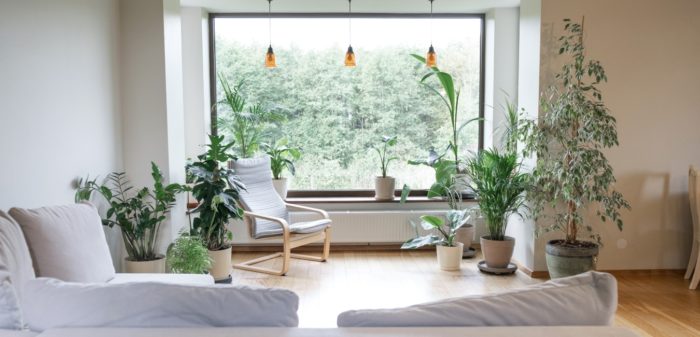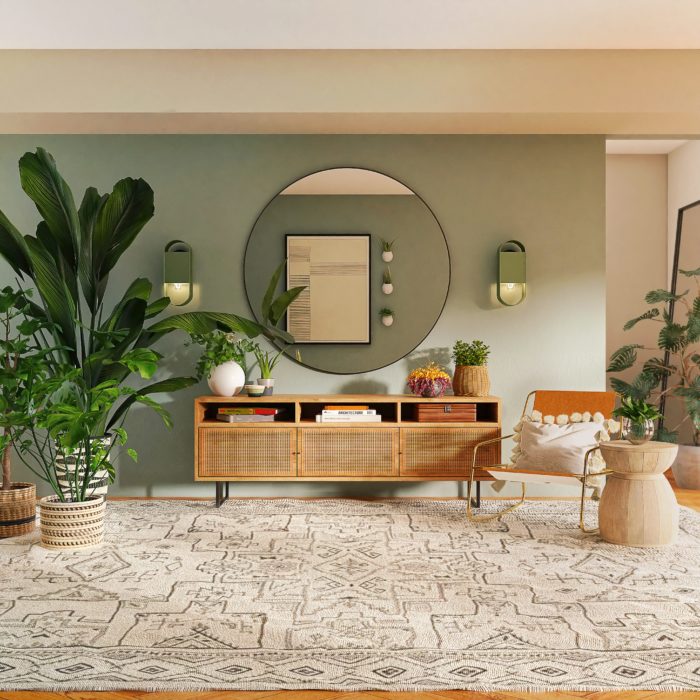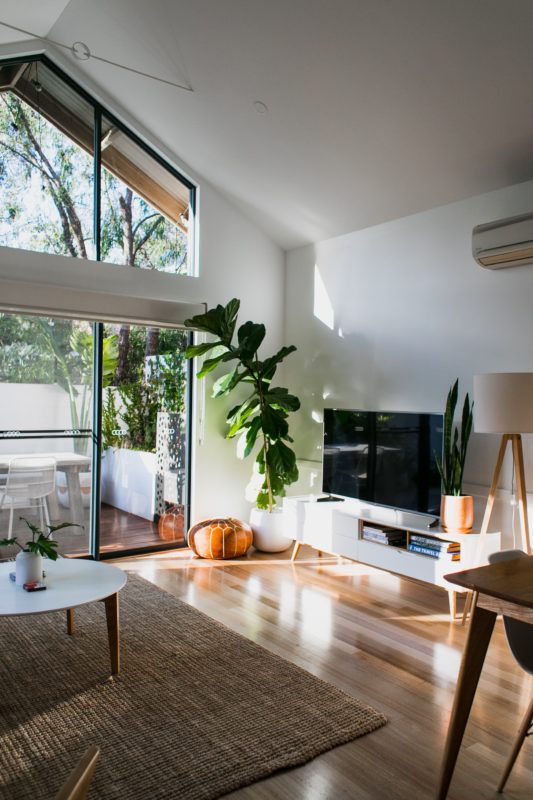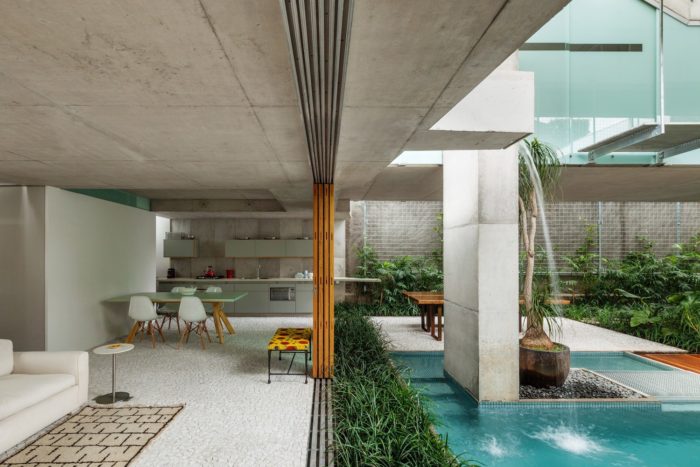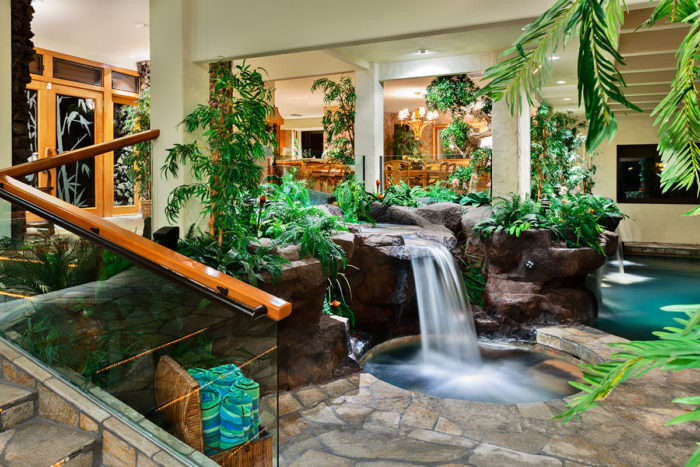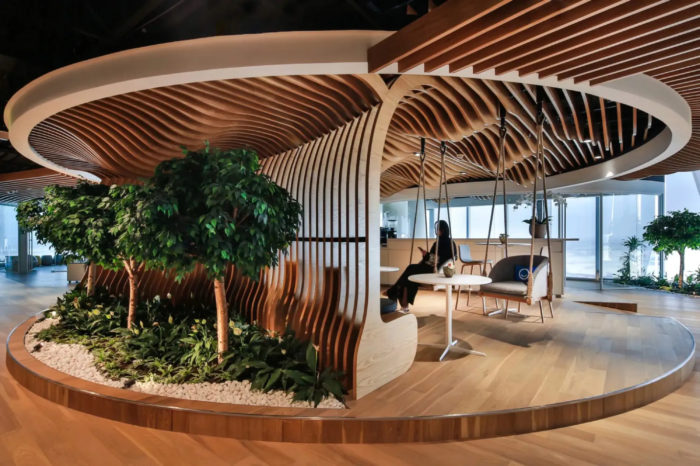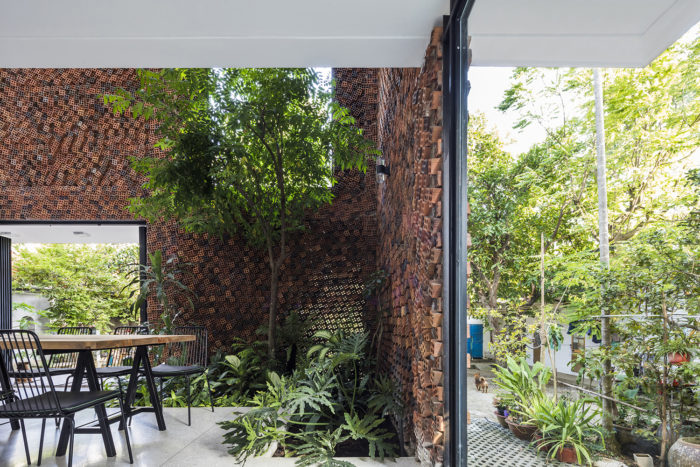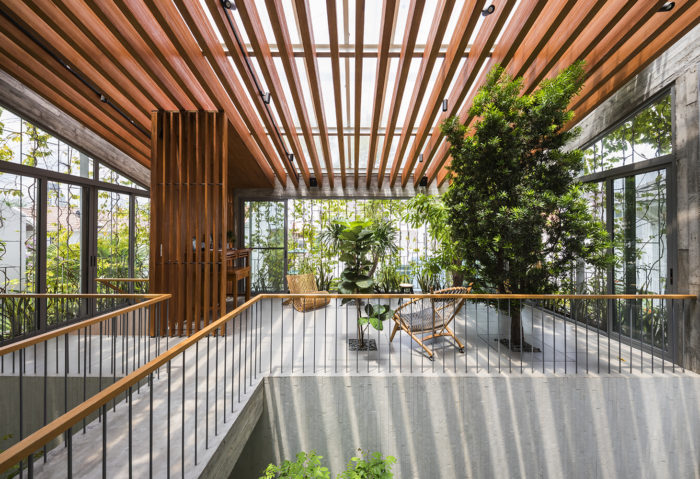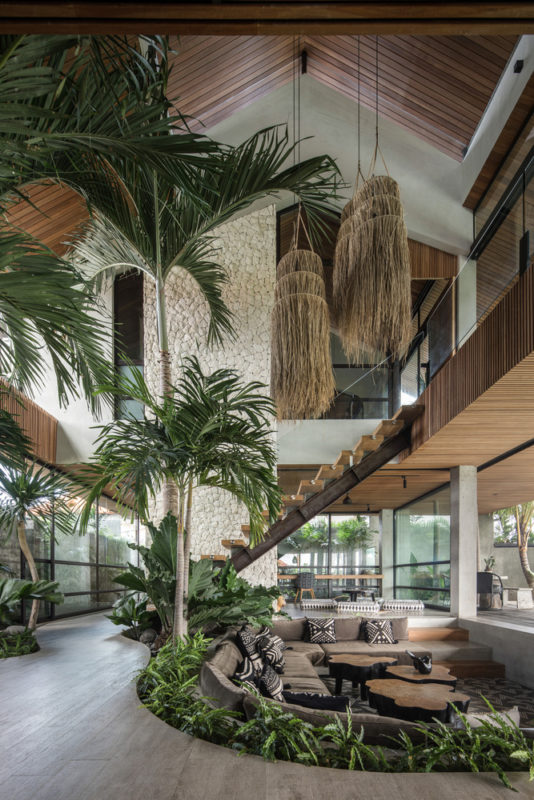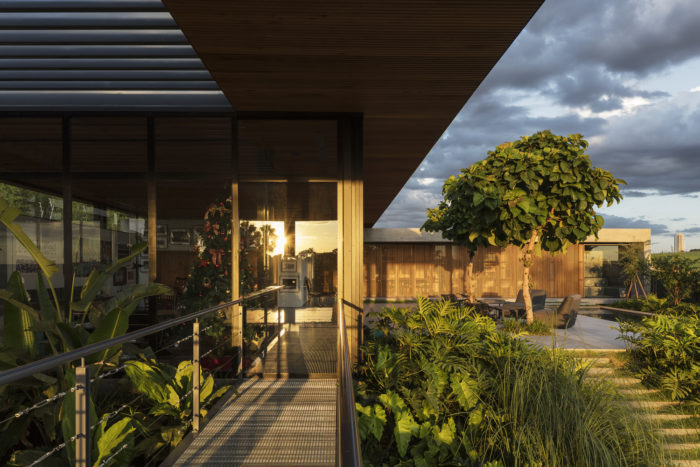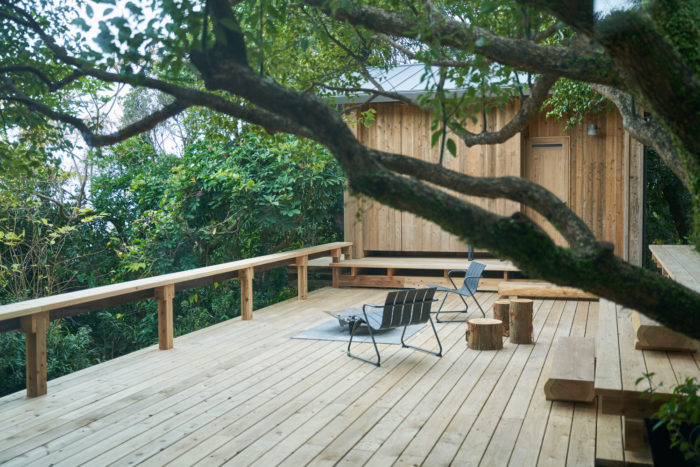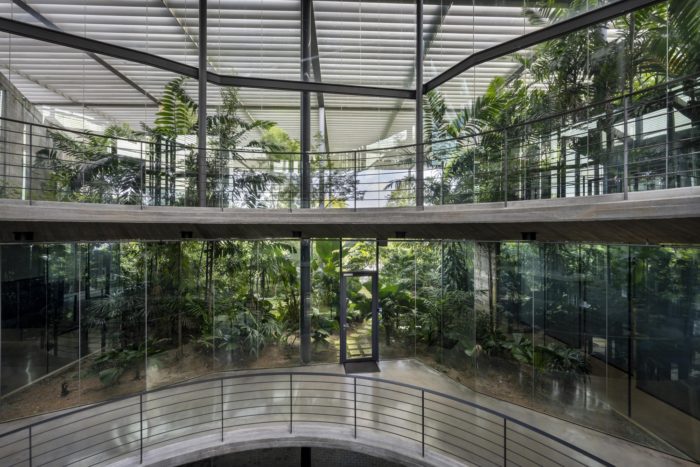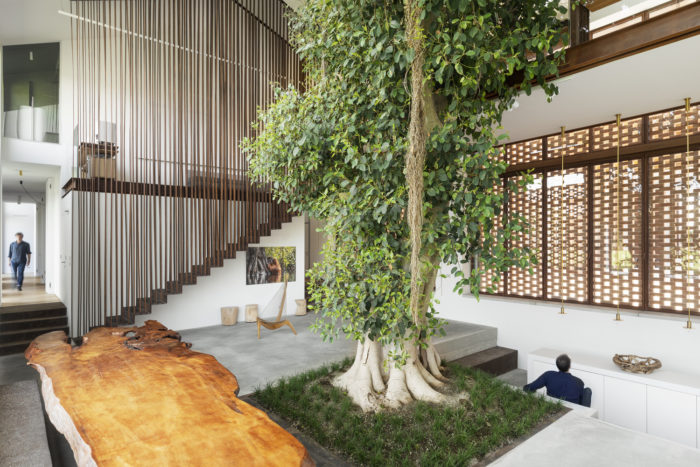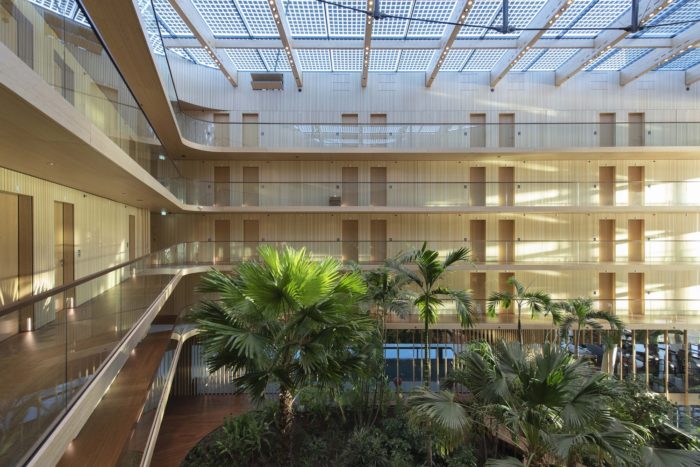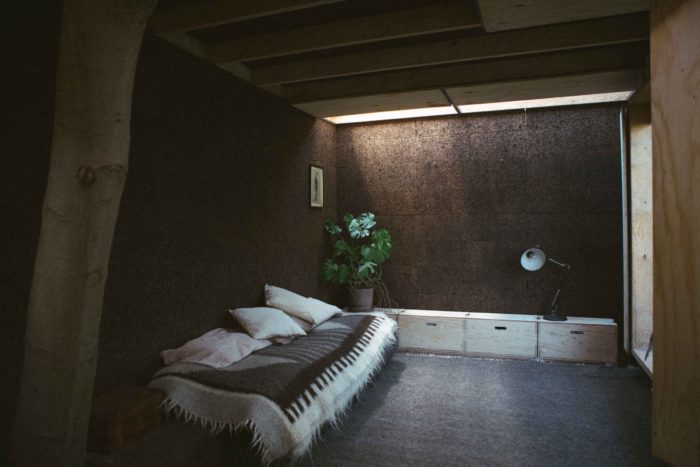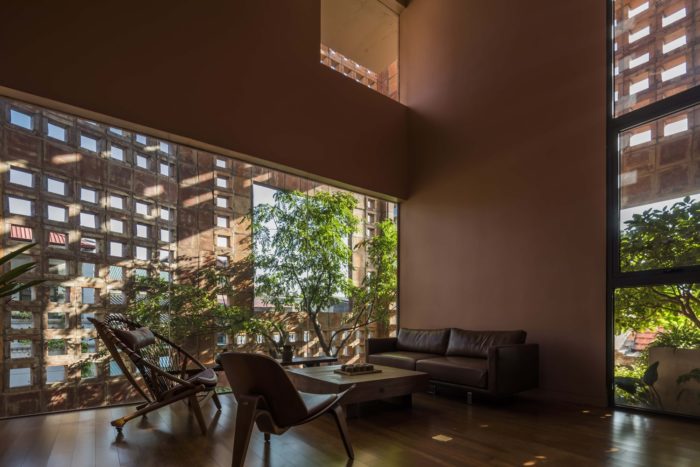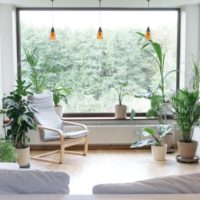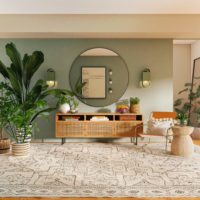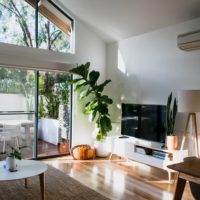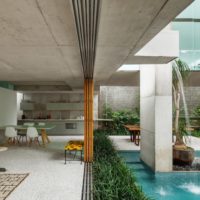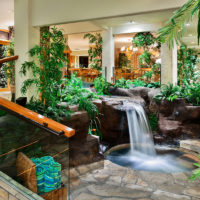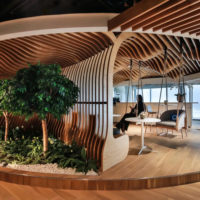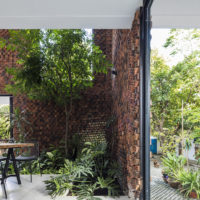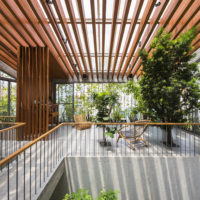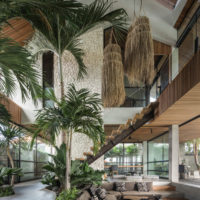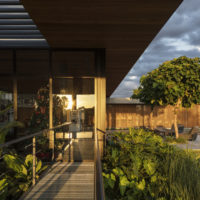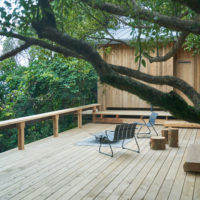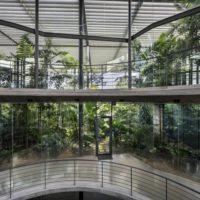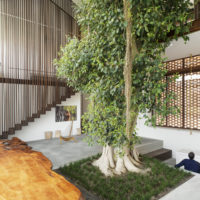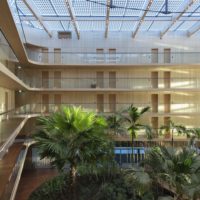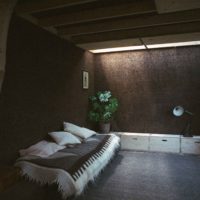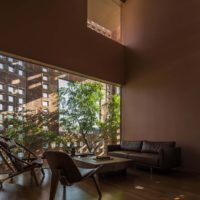From the lush greenery of a vertical garden to the calming presence of a trickling water feature, biophilic interiors have the power to transform any space into a tranquil oasis. By seamlessly fusing architecture and nature, these charming biophilic interiors evoke a sense of awe and wonder, inviting us to reconnect with the natural world and experience the therapeutic benefits of being surrounded by greenery. Whether you’re looking to create a peaceful retreat at home or a welcoming environment in your office, these biophilic designs are sure to inspire and delight you.
Biophilic Interiors’ Most Common Characteristics
Biophilic design is an approach that seeks to restore a sense of harmony between humans and their natural surroundings. Due to decades of mutual support, humans have an innate desire to commune with their natural surroundings. Research has proven that Biophilic Interiors improve the health of building inhabitants and foster a more productive work atmosphere.
Buildings with Biophilic Interiors aim to boost the well-being of their inhabitants by including elements like sunlight, airflow, and landscaping. Biophilic design, which takes biophilia’s ideals one step further by incorporating elements of nature into artificial spaces, is a growing field of study. Let’s take a deeper dive at some concepts that distinguish biophilic interiors.
- Indoor Plants
Plantings are a time-honored method of bringing the outdoors indoors. It is also an excellent method for making human-friendly, biophilic interiors. Plants have been shown to have a calming effect, enhance comfort, lift spirits, and hasten recovery. Bringing plants indoors strengthens the bond between inhabitants and the natural world.
- Pure Sunlight
One of the most prominent characteristics of biophilic interiors is incorporating natural illumination into indoor areas. Skylights and open windows onto a patio or garden are two great ways to let natural light into your home’s interior. The body’s circadian cycle is regulated, and moods are lifted when exposed to natural light. Natural light brings the outside inside, fostering a sense of biophilia by simulating the experience of being in the midst of nature.
- Employing Water Elements
Easy access to water has been linked to lower heart rate and blood pressure, enhanced focus and awareness, calmer states of mind, less anxiety, a more emotionally receptive and forgiving personality, and even better memory. Humidifying the air with water can also make a space more comfortable. Including water features inside a building gives it a more natural appearance and calms the atmosphere. A few examples of biophilic interiors are fountains, waterfalls, and water features installed on walls.
- Sound-Based Enhancers
Nature’s noises have long been known to calm and comfort humans. This is why nature sounds like birds singing or waves lapping against rocks, which can be soothing and put people to sleep. Auditory inputs in environments enrich people’s multisensory perception.
- Utilization of Organic Sources
The biophilic design emphasizes the use of organic, easily accessible materials. Connecting the internal and outdoor spaces through the use of naturally occurring materials. Materials like wood, stone, bamboo, and straws achieve a biophilic design well. The materials’ ability to mimic their natural surroundings partly achieves this aesthetic effect.
Some Alluring Biophilic Interiors
Biophilic design aims to eliminate stress and boost productivity, as we discussed. Biophilic design aims to maximize human health and happiness by reducing the psychological and physiological stress caused by prolonged isolation from nature. Here are eight examples of biophilic design that may hopefully spark ideas for your house renovation.
1) Wall House l Creative Architects
The Vietnamese Wall House, constructed from hole-punctured bricks, features an open space in its center that evokes the atmosphere of a courtyard. CTA, based in Ho Chi Minh City, put some lush greenery around the room’s edges to make it feel more like a green space. The studio used the hole-punctured bricks to construct a home that could operate on its own around the clock by increasing the amount of natural light and greenery within the house.
2) Stepping Park House l VTN Architects
The focal point of Stepping Park House, a three-story residential development, is a giant, diagonally-cut atrium. Each level features natural lighting plants and trees to foster a closer relationship with the park next door.
3) Cala Saona House l Biombo Architects
You can see the jungle-inspired inspiration for the design in this family villa’s internal tropical garden. Biophilic design is also present in natural airflow because it is made mainly of glass and can be opened entirely to the outdoors.
5) Sumu Yakushima Regenerative Residence l tono Inc.
Tsukasa Ono, the architect of this cooperative housing development, wanted to minimize adverse effects on the surrounding environment. Using “regenerative architecture,” Ono rethought how buildings should relate to their natural surroundings. The burnt surfaces of the timber piles used in the construction of Sumu Yakushima encourage the growth of mycelium (fungal threads), promoting the establishment of tree roots and helping to improve the soil.


